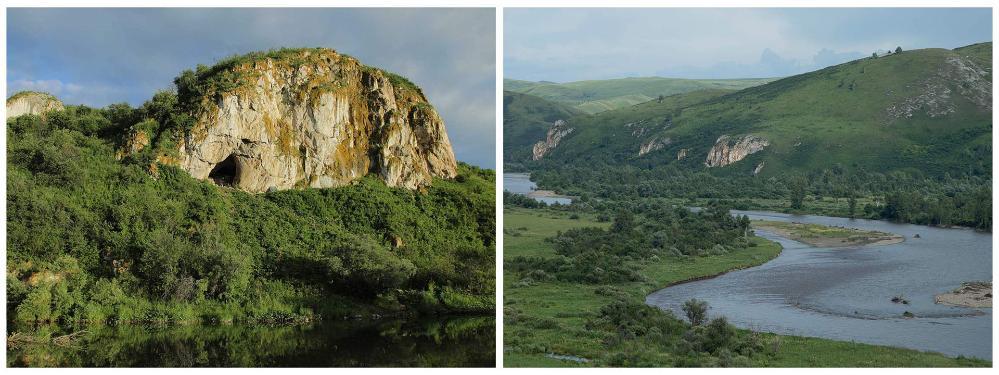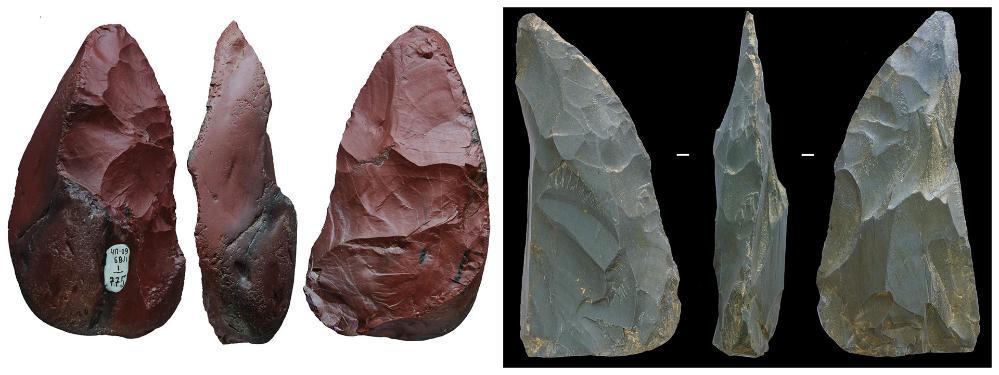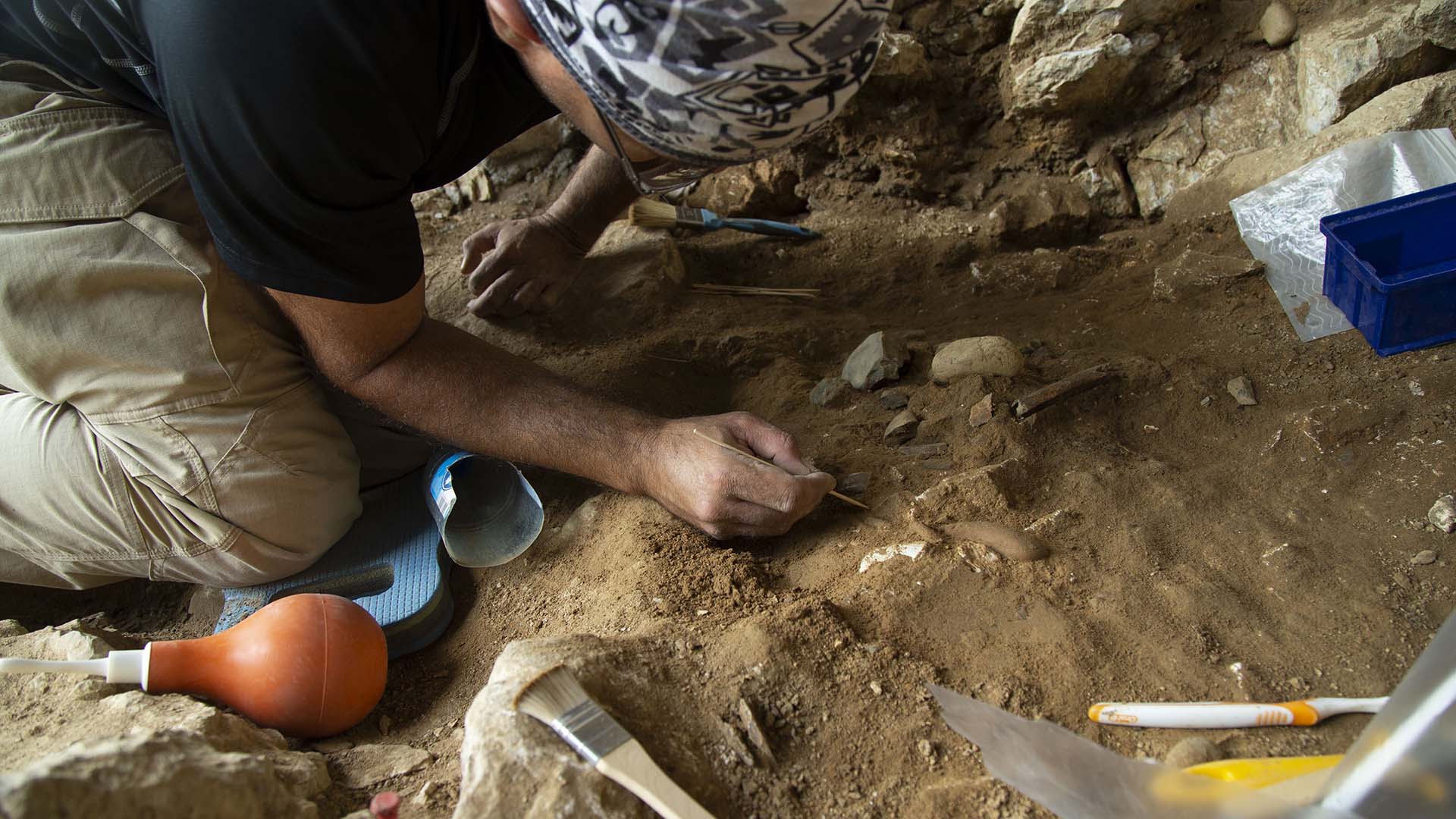January 28, 2020
Siberian Neanderthals were intrepid nomads
Stone tools reveal Neanderthals in southern Siberia began epic journey in eastern Europe.
A new study, published online today in the Proceedings of the National Academy of Sciences of the U.S.A., reveals that Neanderthals made an intercontinental trek of more than 3000 km to reach Siberia’s Altai Mountains, equipped with a distinctive toolkit used to kill and butcher bison and horses.
Neanderthals are our nearest evolutionary cousins and survived until around 40,000 years ago in western Europe. Their legacy lives on today in the DNA of all people with European or Asian ancestry.
Neanderthal fossils were first reported from the Altai Mountains—the easternmost outpost of their known geographic range—in 2007. Nestled in the foothills, Chagyrskaya Cave has yielded 74 Neanderthal fossils, more than any other site in the region, as well as almost 90,000 stone tools and numerous bone tools made by Neanderthals.
The multi-disciplinary team of researchers from Russia, Australia, Ukraine, Poland, Germany and Canada, including ѕ«¶«ґ«ГЅ of ѕ«¶«ґ«ГЅ geochronologist Professor , carried out detailed investigations of the site to discover new clues about the history of these Siberian Neanderthals.
The 3.5 metre-thick cave deposits were first excavated in 2007. Dating of the sediments and the bones of butchered bison indicated that Neanderthals lived in the cave sometime between 59,000 and 49,000 years ago—shortly before modern humans first entered this region.

Left: Chagyrskaya Cave in southern Siberia’s Altai Mountains. Right: The Charysh River valley, with Chagyrskaya Cave in the centre of the photo. Photos: IAET
“The most surprising discovery was how closely the Chagyrskaya stone tools resemble Micoquian tools from archaeological sites in central and eastern Europe,” project leader Dr Kseniya Kolobova from the Russian Academy of Science’s Institute of Archaeology and Ethnography in Novosibirsk said.
Using a variety of statistical tests, Dr Kolobova and her team of archaeologists compared the distinctive stone tools found at Chagyrskaya Cave with those recovered from Micoquian sites in Europe and central Asia. They identified the region between the Crimea and the northern Caucasus as the likely ancestral homeland of the Chagyrskaya toolmakers.
“This part of eastern Europe is 3000 to 4000 kilometres from Chagyrskaya Cave, the equivalent of walking from Sydney to Perth or from New York to Los Angeles—a truly epic journey,” co-author Professor Roberts from UOW’s Centre for Archaeological Science said.
Analysis of animal and plant remains extracted from the Chagyrskaya Cave deposits showed that the Neanderthals were skilled at hunting bison and horses in the cold, dry and treeless environment, while microscopic study of the sediments yielded additional clues about the living conditions they had to endure.
“Neanderthals were supremely adapted to life on steppe and tundra-steppe landscapes, and could have reached the Altai Mountains from eastern Europe by going around the Caspian Sea and then east along the steppe belt,” co-author and geoarchaeologist Dr Maciej Krajcarz from the Institute of Geological Sciences in the Polish Academy of Sciences said.

Micoquian stone tools used as meat knives by Neanderthals at Chagyrskaya Cave about 54,000 years ago. Photos: IAET, Alexander Fedorchenko
The new archaeological evidence indicates at least two separate migrations of Neanderthals into southern Siberia, and is independently supported by whole-genome studies of ancient DNA obtained from Neanderthal fossils.
The first migration occurred more than 100,000 years ago, blazing a trail to the nearby site of Denisova Cave—famous as the home of the enigmatic Denisovans, a sister group to Neanderthals, who also occupied the cave at times. A more recent migration event—originating in eastern Europe possibly about 60,000 years ago—led to the arrival of Neanderthals at Chagysrkaya Cave, armed with their distinctive Micoquian toolkit.
DNA studies confirm a link between Neanderthals living in Europe and at Chagyrskaya Cave after 100,000 years ago. Despite the geographic proximity of Chagyrskaya and Denisova Caves, the Chagyrskaya Neanderthal genome is more similar to those of European Neanderthals than it is to the 110,000 year-old Neanderthal from Denisova Cave.
“By combining these new insights from archaeology and genetics, we can start to piece together the intriguing story of the easternmost Neanderthals and the events that shaped the history of our ancient human relatives,” Dr Kolobova said.
ABOUT THE STUDY
“Archaeological evidence for two separate dispersals of Neanderthals into southern Siberia” by Kseniya A. Kolobova, Richard G. Roberts, Victor P. Chabai, Zenobia Jacobs, Maciej T. Krajcarz, Alena V. Shalagina, Andrey I. Krivoshapkin, Bo Li, Thorsten Uthmeier, Sergey V. Markin, Mike W. Morley, Kieran O’Gorman, Natalia A. Rudaya, Sahra Talamo, Bence Viola and Anatoly P. Derevianko () is published online in the Proceedings of the National Academy of Sciences of the U.S.A. (PNAS) on 28 January 2020, 7am AEDT.
The following institutions were involved in this study:
Institute of Archaeology and Ethnography, Siberian Branch of the Russian Academy of Sciences, Russia
Centre for Archaeological Science, ѕ«¶«ґ«ГЅ of ѕ«¶«ґ«ГЅ, Australia
Institute of Archaeology, National Ukrainian Academy of Sciences, Ukraine
Institute of Geological Sciences, Polish Academy of Sciences, Poland
Institute of Prehistory and Protohistory, Friedrich–Alexander ѕ«¶«ґ«ГЅ Erlangen–Nürnberg, Germany
Department of Human Evolution, Max Planck Institute for Evolutionary Anthropology, Germany
Department of Anthropology, ѕ«¶«ґ«ГЅ of Toronto, Canada
The research was supported by the Australian Research Council, the Russian Foundation for Basic Research, the Russian Science Foundation–Deutsche Forschungsgemeinschaft Cooperation, the Alexander von Humboldt Foundation, the National Science Centre Poland, and the Social Sciences and Humanities Research Council of Canada.
